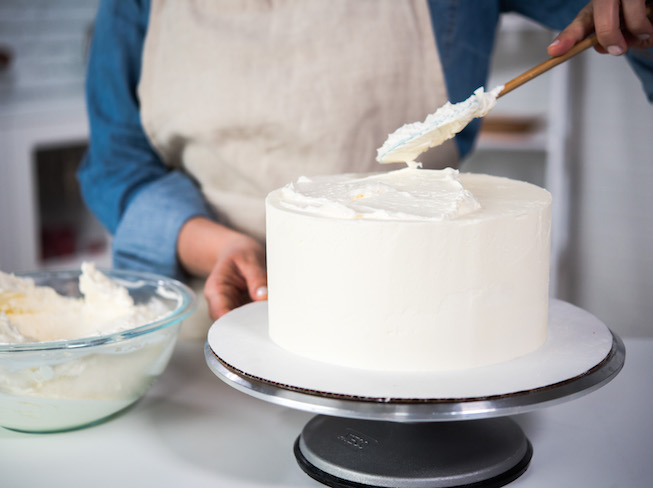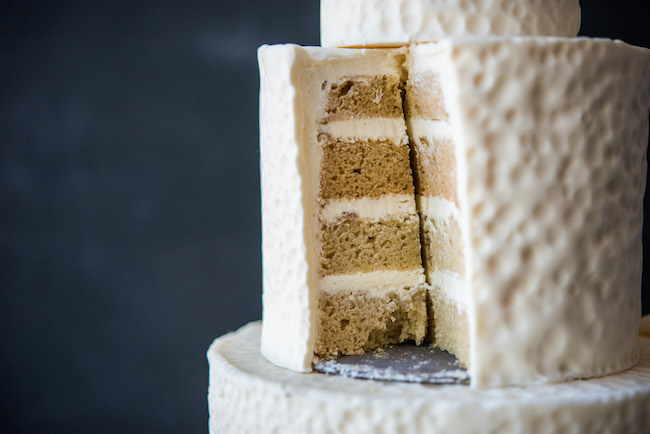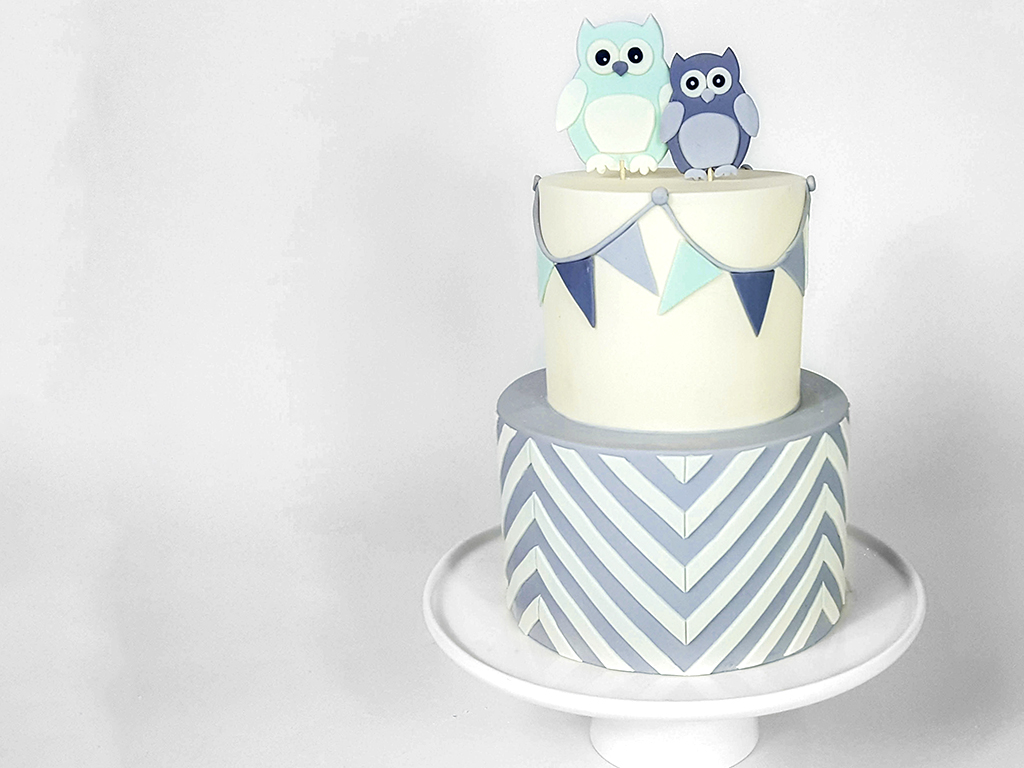Starting a cake business can be scary, intimidating and most of all confusing! You have worked for years on your cake decorating skills and can now bake, fill, carve and cover cakes, you can make flowers and decorations, you feel you have a talent and you want to share your talent, while making some money. It’s a great idea, but where do you begin? What are the laws? How do you advertise?
We are here to help! Over the next few months we will be covering many business topics, from building a great menu and working with customers to working with other vendors, delivery concerns, cottage food laws and more. We want to help you succeed!
We are starting off with the question that is asked most in the cake industry: “How do I price my cakes?”
This is a tricky topic, with many factors to consider. We are going to break down eight factors that will help you price your cakes in a way that will make you and your customers happy.

Free cake pricing guide
Download this FREE guide and enjoy anytime, anywhere access to helpful tips and advice you need.
1. Location…Location…Location…
Where you live and where you bake will be the most important factor to consider when looking at pricing. If you live in New York City, your pricing will be very different than if you live in a small town in New Mexico.
Researching your local market is the best starting point to figure out pricing. You probably know if a gallon of gas costs more or less in your area than it does in surrounding cities. It’s the same with custom cakes. Call other custom cake stores and find out what they are charging. If they are successful and are charging a lot more than you were planning to charge, you need to raise your prices.
2. Do NOT undercut your competitors
I hear it all the time from cake decorators and artists, “I am just starting out, so I can’t charge as much as the big name decorators out there.” Or, I hear, “I have so much to learn, I am not good enough yet to charge that much…I am still building my portfolio.”
When you are starting a company, you are telling friends, family and clients that you believe you are good enough to open a business. You may not feel like you are good enough, but pricing your cakes low hurts yourself because you will be working your tail off, could burn yourself out, not make any money, and you can become known as the CHEAP cake lady.
Undercutting your competitors also hurts them and the cake industry in your area. Bringing prices down in your area can take business away from other companies and cause them to loose income, which can have many unwanted consequences.
Lower prices at the beginning can also make it very hard to raise prices once you have a strong customer base. They will not want to pay the higher prices and will find the next new decorator to take your place. You want to attract loyal customers that see the quality of work you do and are willing to pay for it.

3. Know your costs
This is a big one! We can throw numbers around all day, but if you don’t sit down and figure out your costs, you will under-price your cakes, guaranteed. This is where you get out your pen, paper, calculator and receipts, and calculate what you actually spent or will spend on making a cake.
Here is a list to consider as you calculate your costs
- Overhead: rent, utilities, business cards, posters, office supplies, computer
- Bakery equipment and supplies: mixer, oven, tables, cooling racks, pans, bowls, food coloring, luster dusts, fondant, tools, boxes, cake stands, cake boards, dowels
- Ingredients: flour, sugar, butter, eggs, baking powder, chocolate, vanilla and other specialty ingredients
- Delivery: gas, wear and tear on your car, your time
- Time: You need to make sure you get compensated for your time. Set an hourly rate for yourself and charge accordingly.
The last item is a big one. When I first started my company, I was asked to make a small two-tier wedding cake, it was covered in fondant and had a purple fondant bow and fresh flowers. I charged a price that I thought was high enough, but did not take the time to calculate my costs. After delivering the cake, I went home and calculated my costs, not including the time I spent making the cake (which was about 7 hours) after everything was added in, I calculated that I had made $15 on that cake. Which came out to $2.14 per hour. I learned a huge lesson that day. Don’t make the same mistake I did. Calculate your costs before you agree to even make the cake.
4. Do not compete with grocery store prices
When pricing a cake, never try to compete with grocery stores or wholesale stores. Those cakes were flash-frozen months ago and decorated as fast as possible with buckets of premade icing.
As we discussed before, you want to target the customers that are loyal and will come back for great tasting, quality cakes. If you want to know if your prices are too low, call and get an estimate from a grocery store. If you are close, raise your prices.
5. “It’s just a cake.” No it’s not!
This is something you may hear from customers, or you may have even said it yourself. When a couple gets married/ there is always a picture of the bride and groom cutting the wedding cake. When people go to a wedding, what do they talk about? The dress and the wedding cake!
A wedding cake or a birthday cake is the centerpiece of that event. Do you remember what you got for your birthday when you turned 10? Probably not, but you may remember your birthday cake.
Custom cakes are not just cakes. They are works of art that are central to the celebration. Also, from the business aspect, your cakes are not just a cake you throw in the oven and hope it comes out right. Your cakes are tried and true recipes, icing, cake boards, dowels, fondant, decorating tools, days of work preparing decorations, planning, sketching, designing, and working with the client, then you deliver the cake and make sure it is perfect before walking away.
Grocery stores have cakes, you provide a lasting memory, a conversation piece and a work of art.
6. Do I price by the serving or by the cake?
Once you have run your numbers and you know the costs involved, this is usually the next question. And my answer is both. I know that may not seem very helpful, but here is why. Customers can get nervous contacting a custom cake shop. They want to be able to compare prices and feel that they have a basic idea of what they can expect as far as pricing is concerned.
Here are three things to consider when setting your prices:
Have a minimum price point.
Make it very apparent that your cakes start at a certain price point, such as, “Fondant cakes start at $7.00 per serving” or “Wedding cakes start at $500,” then add that the prices go up depending on the design.
This can save you and your customer time. They will walk away if they know the minimum price is too high. You don’t want to spend time emailing and meeting with a customer only to find out they were expecting a three-tier wedding cake for $50. (It has happened!)
Many of the big-name decorators have starting points of $1000. You may have customers that tell you your prices are just too high, but do not lower your prices! You wouldn’t go to the grocery store and tell them their prices are just too high and ask them to give you a discount, you would shop somewhere else.
You should not try to make every person that contacts you happy. Stick to your pricing and if they choose to go somewhere else, they may not be the right kind of customer for you.
Choose one cake cutting chart and stick with it.
There are many cake cutting charts, but most caterers are trained to cut to the Wilton standard. Once you have chosen which chart you will use, keep it consistent and memorize it, so you can easily quote servings per tier and minimum price points per tier. Most customers will come to you with the number of people they want to serve, be ready to give them a starting price as well as how many tiers the cake will need to be.
Pricing sculpted cakes.
Specialty cakes and carved cakes require a lot more time for designing, structuring and decorating. This is a great time to price by the design.
Be realistic about the time required and price it accordingly. Just because a customer only wants to serve 10 people does not mean it will take you less time than a cake to serve 30 people. Be honest with your customers, tell them these cakes take much longer than other cakes, and are priced based on the design not on the number of servings.
7. Pricing false cakes
False cakes can be easy to decorate and can give you extra time, allowing you to get started earlier on orders. They also add height to smaller cakes, but pricing them can be tricky.
I found that some brides wanted to order a false cake and have sheet cakes on the side to try to save money. For me, this is not why I started a business, so I priced my false cakes at half the cost I would charge for a real cake, and then priced my sheet cakes at half the price of a regular size piece of cake. So when you add them together, this option does not save the customer money.
Sometimes the customer wants to just add height to the cake. In this case I still charged half the price because of the time to decorate the cake and the cost for the fondant and other ingredients.
Some decorators choose to charge full price for false tiers, this will be your decision based on your costs and if your market will allow it.
8. Your time is worth money
I have a good friend who’s an amazing photographer, and she charged prices I couldn’t believe. When I asked her about it she said, “Just because I could never afford myself doesn’t mean other people can’t afford me.”
Make sure you give yourself credit and include the hours you worked on your cakes. Your prices may seem high to you, but if your research shows that your market will sustain your prices, go for it. Remember, you are your own worst critic, so give yourself a break and be honest with yourself about your time you spend on cake decorating.
Your time is valuable, so set an hourly rate and stick with it. You have a great talent and should not be making less than minimum wage because you are building your portfolio or because you are just starting out. You would not apply for a new job and tell them that you are okay with making $2 per hour, so don’t do that to yourself.
Pricing cakes correctly can take some work, but is certainly worth the time and effort. Run your numbers and then set your prices in a range your local market will sustain and that you are comfortable with, and you will find success!
Build a cake business you’ll love forever!

Learn how to perfect your pricing strategy, build a strong financial foundation and so much more, in business guru Michelle Green’s online Bluprint class.





Not able to download the price guide.